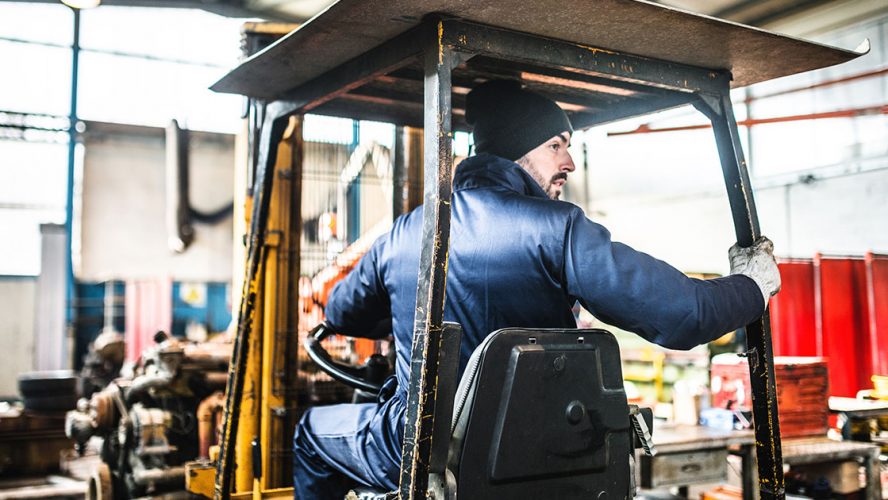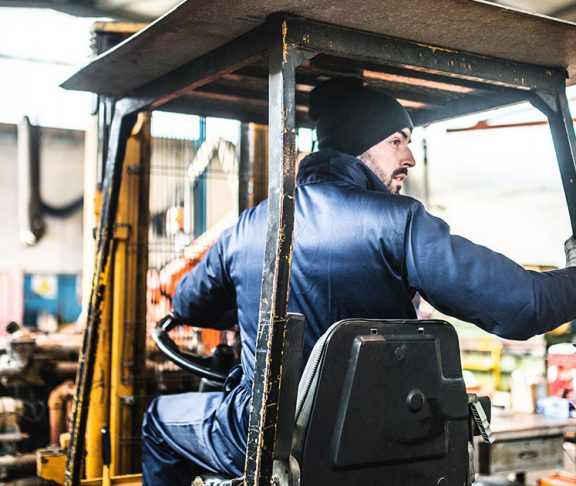Warehouses can be very busy places, with lots of people, moving equipment and racks of goods forming many intersections. Hazards can lurk around every corner — and there are lots of corners. In fact, according to Injury Facts 2017, 95,000 injuries occur in the transportation and warehousing industry annually.
All injuries are preventable. Employers are ultimately responsible for a safe workplace, but we can each do our part. Here are the top three causes of warehouse injuries and some helpful tips:
1. Overexertion
Employers — promote wellness and stretching programs and minimize worker repetitive motions with job rotation. Develop safe operating procedures for all manual lifting jobs and train, observe and monitor workers.
Workers — exercise regularly, eat right and keep a strong core. Take frequent breaks and, when lifting, plan in advance, keeping a straight back and lifting with your legs.
2. Slips, trips and falls
Employers — adopt a footwear program if requiring workers to walk in cold storage areas or if floors are slick. Develop a housekeeping and/or inspection program to ensure clean work areas. Designate pedestrian walkways and adopt a no cell phone policy inside the warehouse, even for visitors.
Workers — always wear slip-resistant shoes. Even with such a precaution, make sure to watch your walking path and avoid distractions, regularly scanning work areas for hazards. Spills should be cleaned immediately and walkways should always be kept clear.
3. Contact with objects
Employers — consider the use of stop signs, speed limits and mirrors to minimize intersection incidents. Provide necessary personal protective equipment (PPE) and monitor its use, even for temporary workers and visitors. Take an ergonomic approach to storing goods and consider a “level pick” system to maintain evenly-loaded pallets.
Workers — use extra caution around corners and near doorways, wear recommended PPE such as steel-toed shoes and a hard hat, and store heavy items closest to the ground and secure those stored at heights.
Some additional considerations to keep in mind are fatigue and temporary workers. Fatigue is a contributing factor to many warehouse injuries. Research shows 43 percent of workers are sleep-deprived, and those most at risk work night, long or irregular shifts. Optimally, workers should get seven to nine hours of sleep each day.
Finally, warehouses often employ temporary workers. Because workers have a higher risk of injury their first three weeks on a job, employers should ensure all workers receive proper safety training before starting.
Everyone deserves to arrive home safely when the work day ends. Putting safety first is not only the right thing to do, it benefits everyone involved.

